Participating Units
Surviving Luftwaffe records for 1942-43 are sparse and there are no Daily Operations Reports to confirm details such as which aircraft from what Unit were involved in a particular raid. However, PoW sources record that at least five units participated in the raid on York.
The transfer of resources to the Eastern Front in 1941 left only weak bomber forces in the West and the Luftwaffe had to 'cobble together' whatever Units it could in order to comply with the Führer's wishes for retaliatory action.
A secret recording of a conversation between two captured Luftwaffe aircrew involved in the Baedeker series of raids shows that the aircrew were disturbed by the number of aircraft that could participate.

Part of the "Most Secret" document describing the conversation between Luftwaffe aircrew.
Image copyright of the National Archives.
By August 1941 only 203 bombers remained in the west........no more than 84 were serviceable on any one day.
The responsibility for making the attacks was given to Luftflotte (Air Fleet) 3 which was based at airfields in German occupied areas of France, Holland and Belgium.
The units tasked with the raids most likely included:
KG2......Kampfgeschwader 2 nicknamed Holzhammer (Wooden Hammer).

Between December 1941 and March 1944 this squadron was based at Soesterberg in Holland.
The map shows the ideal location of this airfield for the Baedeker Raids.
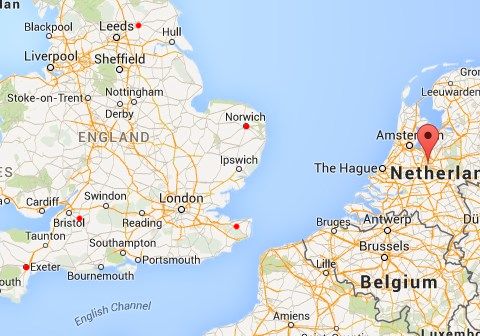
The map shows the major Baedeker targets and the location of Soesterberg.
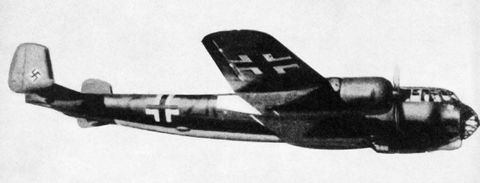
This Unit was equipped with Dornier Do217s (a more powerful version of the Dornier Do17).
(photo credit: Deutsches Bundesarchiv)
The Do217 was designed as a "horizontal bomber" and tended to drop their bombs in "sticks".
KGr106......Kampfgruppe 106

Originally a Coastal Unit equipped with seaplanes, in August 1941 it was redesignated Kampfgruppe 106 and was given an anti-shipping role. During the Baedeker Blitz it was stationed at Dinard. This location is ideal for the three southerly targets. However, a contingent was temporarily transferred to Leeuwarden in Holland for the York raid.
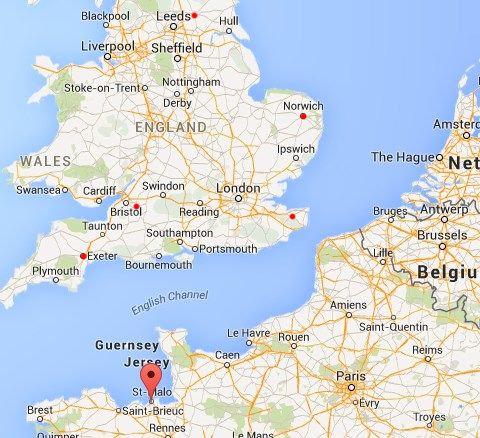
The location of Dinard and the Baedeker cities.
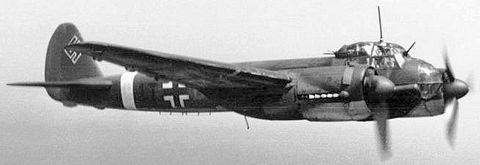
This squadron was equipped with the Junkers Ju88A (photo credit: Deutsches Bundesarchiv)
The JU-88 was also designed as a horizontal bomber, but the Luftwaffe Command insisted that the plane be able to operate as a dive-bomber. This required air brakes and other features that seriously affected speed and handling.
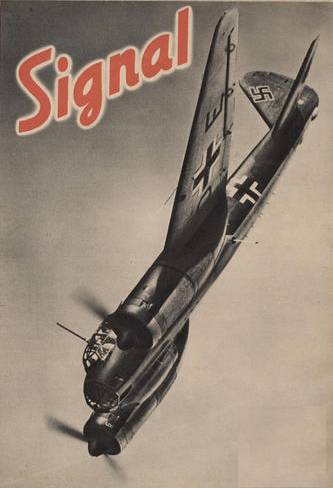
A JU88 used as a divebomber....picture from Signal magazine.
(Signal was a magazine published by the Wehrmacht during the war as a propaganda tool)
2/KG100......Kampgeschwader 100
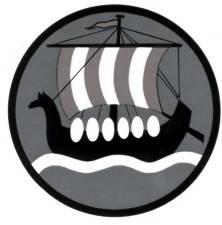
When this unit was moved west in February 1942 they were almost immediately moved to Peenemünde and to Greece. Left behind was a Staffel known as the Erprobungs-und Lehrkommando 100 (Trials and Evaluation Command). This was a specialised unit for the operational testing of new tactical navigation methods over the British Isles and their aircraft were equipped with the latest radio aids to find their targets.
The Germans only used the term "Pathfinder" from August 1942 (after the introduction of this technique by the RAF). In April 1942, the German target marking was done by "Anzünder" (Fire-Lighter) or "Beluchter" (Illuminator). KG100 was primarily an "Anzünder" unit and dropped mainly incendiary and small high explosive bombs.
The KG100 flew the Heinkel He 111.
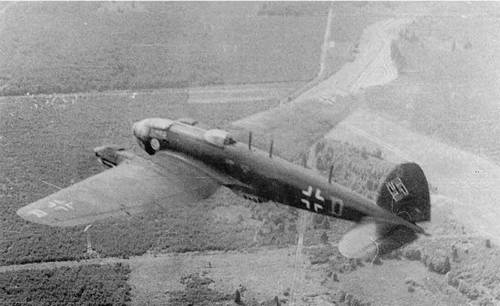
A Heinkel 111 H5 series belonging to KG100.....note the three aerials for the X-Gerät which gave it the nickname, "Dreimaster HE". (photo credit: Deutsches Bundesarchiv)
Kampfgeschwader 26 (KG26)
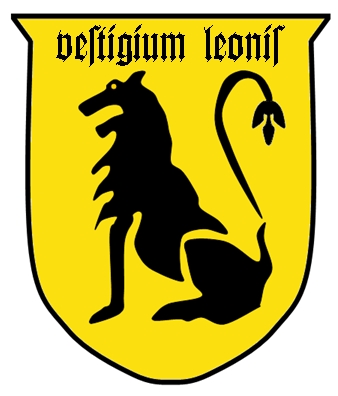
3/KG26 also used the He111 with unit marking 1H. This unit was known to specialise in the use of the Y-Verfahren. In April and May 1942 the unit was based in Rennes.

A single large antenna mast, just behind the cockpit on the top of the forward fuselage, identified a Y-Gerate Heinkel 111.
Fernaufklärungsgruppe 123 (3rd Staffel)
(Long Range Reconnaissance)
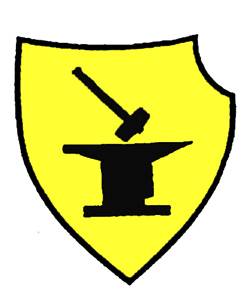
What is not usually stated is that, during the Baedeker Blitz, Pathfinder support also came from the 3rd Staffel of Fernaufklärungsgruppe 123......3.(F)/123....... flying Ju88s and based in Lannion.
PoW statements record that this unit led "most" raids of this period although, apparently, not the York raid, the fire raising role going to aircraft of KG30.
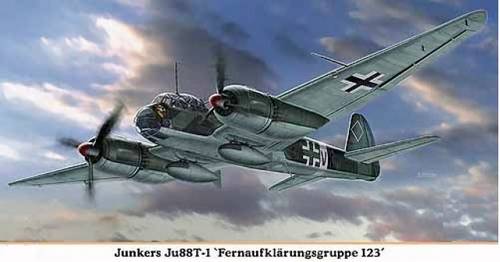
The image is a painting from the cover of a German plastic model which would indicate that this was a well known unit (photo credit: unknown).
This was a "Beluchter" (Illuminator) unit and marked the targets by dropping flares.
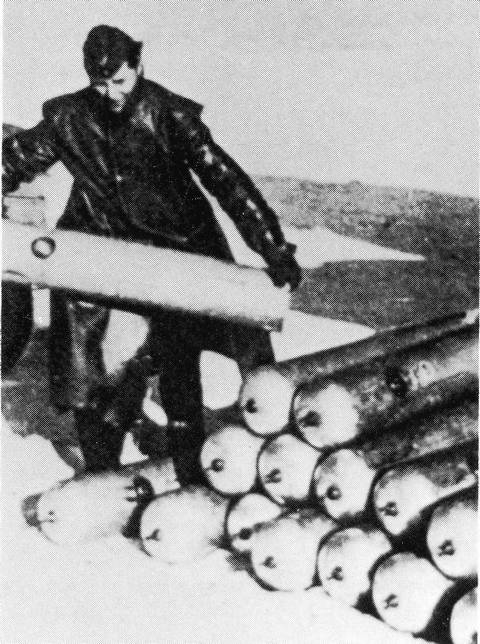
The flares consisted of either a single or four candles and were ejected, together with their parachute, from the cannisters (shown above) by a small charge at a predetermined altitude.
(photo credit: Deutsches Bundesarchiv)
KG30......Kampgeschwader 30
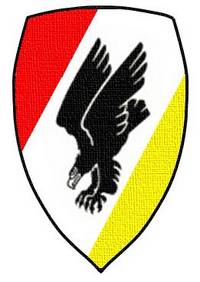
KG 30 (described as an elite unit) was also equipped with the Junkers Ju 88 and, like many of the Baedeker units, was initially trained as an anti-shipping and maritime attack unit. During the York raid it is recorded to have undertaken similar duties to the Fernaufklärungsgruppe 123 (fire raising).
The wide number of units reported to have participated in the series of raids known as the Baedeker Blitz is a good indication of the "cobbling together" that was necessary. Overall RAF 80 Wing (Signals) recorded the involvement of twelve different units
Luftwaffe terminology is rather complex so a basic quide to the terms used is shown below.
Luftflotte..........one of the primary ways of "dividing up" total resources. A Luftflotte could command one to three Fliegerkorps, depending upon the size of the command area and the nature of operations.
Fliegerkorps......a composite, mobile command with its own geographical area of control and operations usually consisting three to five bomber Geschwader and one to four fighter Geschwader.
Geschwader......an operational unit consisting of about 100 aircraft organized from 3 to 5 Gruppen. Equivalent to a USAAF Wing or an RAF Group.
Gruppe......the basic independent/self governing unit in the Luftwaffe. Each Gruppe would have its own commander with other administrative, technical and medical staff. It consisted of around 30 aircraft spilt into three Staffeln.
Staffel.................a squadron of between six and twelve aircraft.